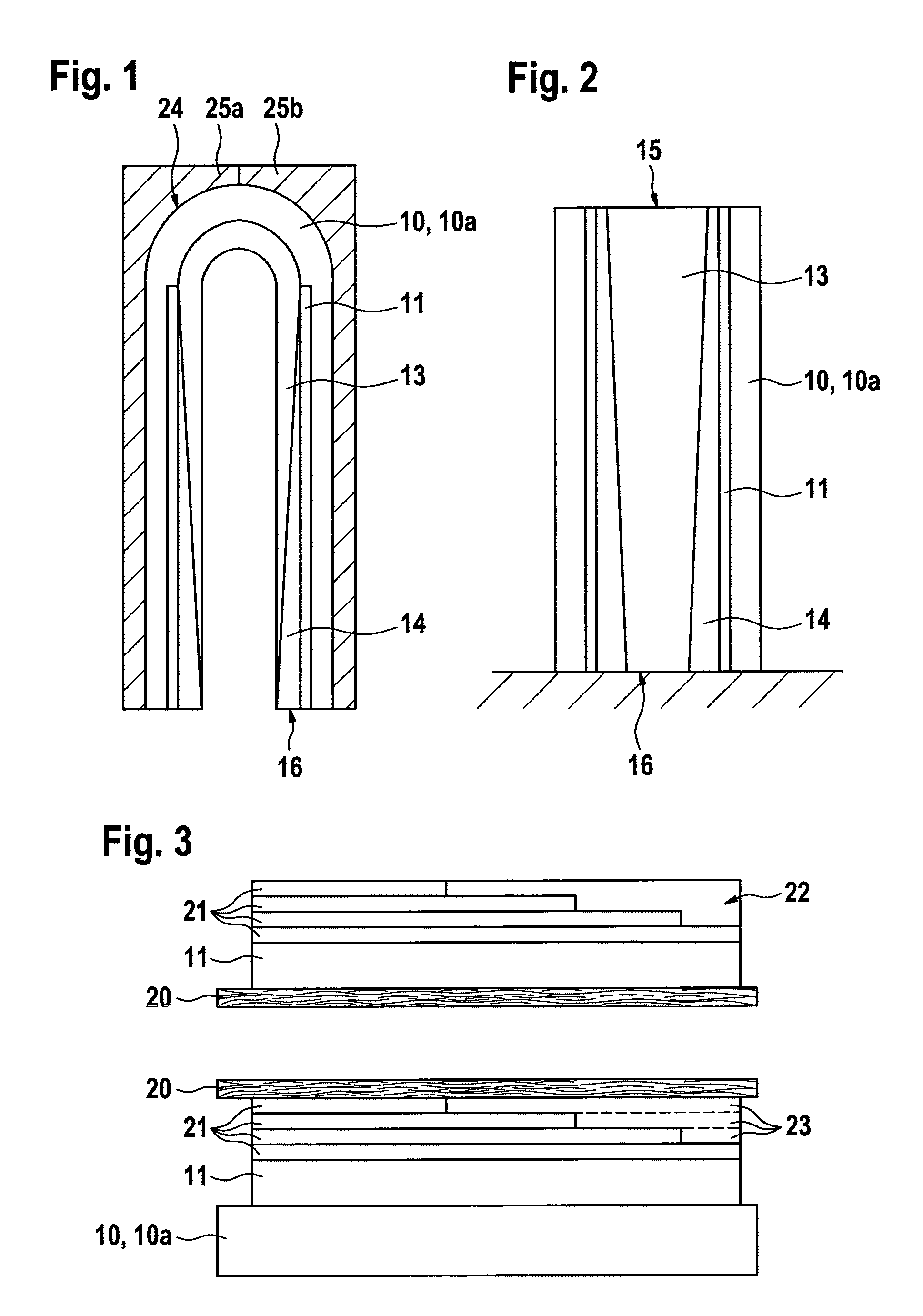Method for production of a solid oxide fuel cell (SOFC)
a fuel cell and solid oxide technology, applied in the direction of manufacturing tools, sustainable manufacturing/processing, final product manufacturing, etc., can solve the problems of fuel cell premature aging, frequent problem of fitting on the inside of the electrolyte body, etc., and achieve the effect of simple manner
- Summary
- Abstract
- Description
- Claims
- Application Information
AI Technical Summary
Benefits of technology
Problems solved by technology
Method used
Image
Examples
Embodiment Construction
[0024]FIG. 1 shows a schematic view of one exemplary embodiment of the method for production of a solid oxide fuel cell1, as is illustrated in perspective form in FIG. 5. First of all, FIG. 1 shows a cross section through an injection mold, which has a first mold element 25a and a second mold element 25b. The mold elements 25a and 25b can move with respect to one another, and can be moved apart from one another in order to remove an injection-molded electrolyte body 10 from the mold. The electrolyte body 10 is in the form of an electrolyte body that is closed at the ends, and therefore has a cap 24. According to one possible embodiment for production of the electrolyte body 10, this may be in the form of a single part, such that the tubular, cylindrical section of the electrolyte body 10 can be produced by injection of an electrolyte compound 10a into the injection mold, in which case the cap 24 can also be produced by the electrolyte compound 10a itself in the injection mold. On th...
PUM
| Property | Measurement | Unit |
|---|---|---|
| thickness | aaaaa | aaaaa |
| thickness | aaaaa | aaaaa |
| diameter | aaaaa | aaaaa |
Abstract
Description
Claims
Application Information
 Login to View More
Login to View More - R&D
- Intellectual Property
- Life Sciences
- Materials
- Tech Scout
- Unparalleled Data Quality
- Higher Quality Content
- 60% Fewer Hallucinations
Browse by: Latest US Patents, China's latest patents, Technical Efficacy Thesaurus, Application Domain, Technology Topic, Popular Technical Reports.
© 2025 PatSnap. All rights reserved.Legal|Privacy policy|Modern Slavery Act Transparency Statement|Sitemap|About US| Contact US: help@patsnap.com



